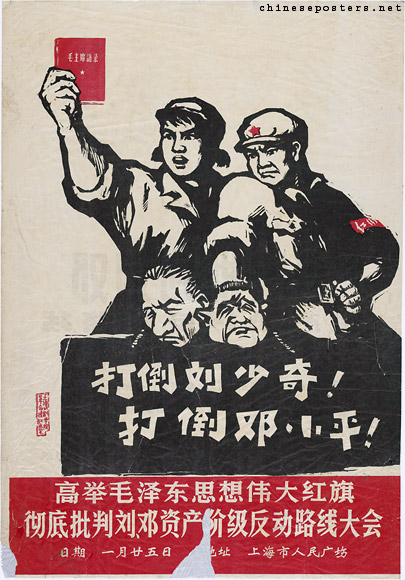Americans seem to have woken up to disparities in our society, particularly for black people. This is a good thing. Wokeness will go a ways toward fulfilling the promises suggested in the Declaration of Independence.
But there is a most disturbing part of wokeness that is not limited to racial matters, and that is the language fascism of the left. It is as dangerous to a free society as any fascism of the right and too close to what we can observe every day in China.
Much of the language of wokeness does not inspire faith in a more equal future. It inspires only despair at the convergence I see between authoritarian rhetoric in China and similar language in the woke left in the US. That model of wokeness is what every authoritarian government wishes for America. It is retreat into tribes and truth in service of politics. Despair is the necessary result, for on the one hand no one can ever be sufficiently woke, and on the other, concurrent damage to civil society is not easily rebuilt.
University speech limitations have been around as long as I can remember, even in the sixties. We saw codes reappear a few years ago with the university speech codes and microaggression issues. Per wokeness, speech is only allowed to be free if it is correct. Ignored in a person’s “right” to be called what pronoun they wish is the “right” to demur. The most lightweight response – “I’m offended” – should not be anything more than a personal statement, but it became a call for apologies and more. The more insistent wokeness resulted in cancellation of speakers, changes in venue, and some faculty members hurt professionally or physically in trying to reply to accusations and restrain the mobs. Jordan Peterson is only cashing in on the difficult experiences of Jonathan Haidt, David Shor, and many others.
American liberals should be as deeply disturbed by such developments in censorship and language policing as they are to lies and conspiracy theories of the alt-right. It is inimical to civil society and to liberalism.
The Chinese model
We know the fascism in CCP in China now – the loyalty tests, the unwritten speech codes, sanitizing of history, the scrutiny of texts and teachers for incorrect thinking, the sense of being under attack, the arrests for mocking Xi or CCP.
There is no truth apart from what CCP says. The politically correct mimic the speech and ideas in pledges and writing. This “performative declamation” is an old fascist – and CCP – practice. Geremie Barme at Australian National University calls it New China Newspeak. The progressive warrior has a lot in common with a CCP cadre on speech codes. Whatever one calls it, it is straight outta 1984 and it is double-plus ungood. And it is spreading on the progressive left. See here, and here and here.
President Obama warned progressives in 2019 to avoid a circular firing squad on correctness. And Jonathan Chait warns about wrongthink and despicable behavior among progressives in a recent New York magazine piece. Purity on wokeness appears essential, but once ensnared by wokeness, there is no escape. James Lindsey has a penetrating analysis of wokeness as cult indoctrination at New Discourses. New China Newspeak appears to be another Chinese import to America.
Factions don’t balance factions
One can be sanguine about the language and behavior of wokeness. At the beginning of any cultural movement, there is a tendency to extreme behavior by some, and that motivates others. The extreme behavior is temporary and eventually the system adjusts to a new norm.
The progressive cultural movement of the last ten years does feel different because it is matched by extremists on the right (white nationalists, like Trump, and evangelicals who suggest a retreat from the world (Rod Dreher) until Trump, God’s appointee, can deliver us). When silence is violence there can be no middle ground. Democracy demands we be able to talk with one another. When communication fails, civil society fails, and democracy fails.
We have threats of real physical violence enabled by the alt-right. Michigan shut down its legislature rather than confront the armed thugs. Threats are also from the police, as agents of the state and from our ruler. The physical threats were there, in the Trump march to display his ignorance of the Bible and its contents. Ezra Klein – I was watching the speech Trump gave before tear-gassing the protesters in the park in DC. What so chilled me about that speech was how much he clearly wanted this — like this was the presidency as he had always imagined it, directing men with guns and shields to put down protesters so he could walk through a park unafraid and seem tough.
Most of the violence from the left is still verbal, but it tortures language to the point of meaninglessness – there is no racism other than white racism. Silence is assault. Students need safety from language or viewpoints with which they disagree. An “incorrect” pronoun is violence. Jobs and careers are destroyed in senseless witch hunts, all due to someone using incorrect speech or even alluding to ideas with which the speaker actually disagrees. This is Orwellian, to be sure. It is also reminiscent of witch hunts circa 1968 in China – academics, officials, loyal party members suddenly deemed insufficiently loyal.
The factions left and right do not offset or balance each other, for a middle ground to find consensus. The middle ground shrinks. The factions only encourage each other in democratic decay. Democracy does die in the darkness of censorship and mistrust. It is to remember Robert Oppenheimer in a different context – I am become Shiva, the destroyer of worlds.
Media infection
As in China, the major US media now seem controlled by a faction with a particular political agenda.
It is not just speech codes and sanctioning of university faculty for speaking their minds. It is corruption of what we used to consider the free press. If staff at the New York Times cannot restrain themselves in forcing resignation of the editor who okayed publication of an op-ed of which the staff (collectively) disapproved, what hope for journalism anywhere? There are other examples. Matt Taibbi made the point in The American Press Is Destroying Itself – how can any editor operate when the price of airing opinions shared by a majority of the population might be loss of job?
Right wing media – Fox News and other – now seem justified in making a pot and kettle accusation. What we thought was mainstream media attempting to pursue truth and openness seems just a sham. Reporting and truth give way to virtue signaling.
Discourse matters
Our democracy can only survive as our civil society functions. Our ability to disagree in a civil way, our ability to tolerate dissent and tolerate each other, our ability to bring kindness and understanding to social interaction are all disappearing. These traits add up to civility. Civility is not just smiling in public. It is how we use language, in print, in person, online.
Lucian Pye told us what society looks like in China without our norms of civility, without civil society, without generalized trust. The government become the arbiter of social norms, and that is dangerous. Civility, Social Capital and Civil Society: Three Powerful Concepts for Explaining Asia. To define the state as the only legitimate community, and thus deprive citizens of individual rights, comes close to advancing a fascist ideology. Protests are a necessary way for us to communicate with each other. We should use them, by all means. But extremities of language only divide. It is not the Christian way. It is not the King way.
In 1995, novelist Umberto Eco wrote a piece for the New York Review of Books called Ur-Fascism. Based on his youth in fascist Italy during World War II, he listed fourteen elements of fascism, regardless of political origins on the left or the right.
We can see Xi Jinping and today’s CCP in this list. The seven deadly sins in Document No. 9 are a warning to all Chinese. In the list we also see the Cultural Revolution and its destruction of statues, historical buildings, books, and maiming and murder of university teachers who were not sufficiently – well, let us say, woke. And now we can see the American progressive left – and alt-right – at every step.
This is an abbreviated list of Eco’s fourteen points, from Chris Hedges in American Fascists way back in 2006. Blogger Jason Kottke characterized each item. Think about current news stories as you consider each of the fourteen.
- The cult of tradition. “As a consequence, there can be no advancement of learning. Truth already has been spelled out once and for all ….”
- The rejection of modernism. “The Enlightenment, the Age of Reason, is seen as the beginning of modern depravity. In this sense Ur-Fascism can be defined as irrationalism.”
- The cult of action for action’s sake. “Action being beautiful in itself, it must be taken before, or without, any previous reflection. Thinking is a form of emasculation.”
- Disagreement is treason. “The critical spirit makes distinctions, and to distinguish is a sign of modernism. In modern culture the scientific community praises disagreement as a way to improve knowledge.”
- Fear of difference. “The first appeal of a fascist or prematurely fascist movement is an appeal against the intruders. Thus Ur-Fascism is racist by definition.”
- Appeal to social frustration. “…one of the most typical features of the historical fascism was the appeal to a frustrated middle class, a class suffering from an economic crisis or feelings of political humiliation, and frightened by the pressure of lower social groups.”
- The obsession with a plot. “The followers must feel besieged. The easiest way to solve the plot is the appeal to xenophobia.”
- The humiliation by the wealth and force of their enemies. “By a continuous shifting of rhetorical focus, the enemies are at the same time too strong and too weak.”
- Pacifism is trafficking with the enemy. “For Ur-Fascism there is no struggle for life but, rather, life is lived for struggle.”
- Contempt for the weak. “Elitism is a typical aspect of any reactionary ideology.”
- Everybody is educated to become a hero. “In Ur-Fascist ideology, heroism is the norm. This cult of heroism is strictly linked with the cult of death.”
- Machismo and weaponry. “Machismo implies both disdain for women and intolerance and condemnation of nonstandard sexual habits, from chastity to homosexuality.”
- Selective populism. “There is in our future a TV or Internet populism, in which the emotional response of a selected group of citizens can be presented and accepted as the Voice of the People.”
- Ur-Fascism speaks Newspeak. “All the Nazi or Fascist schoolbooks made use of an impoverished vocabulary, and an elementary syntax, in order to limit the instruments for complex and critical reasoning.”
Eco quotes Franklin Roosevelt during a radio address on the “need for continuous liberal government”:
I venture the challenging statement that if American democracy ceases to move forward as a living force, seeking day and night by peaceful means to better the lot of our citizens, fascism will grow in strength in our land.
One can find every one of the ideas on Eco’s list – save perhaps number 12 – exemplified daily in news about the progressive left.
Chris Hedges used Eco’s list in an introduction to his book about the Christian right. Hedges – who describes himself as a socialist – shows the right wing oligarchic systems at work in Treason of the Ruling Class. To see the applicability of Eco’s list to the distinctly non-Christian left suggests the depth of my fears about democracy. Language extremism is a democratic sickness, and it can metastasize.
Reading forward
Civil discourse requires reading. Previously, we read Pedagogy of the Oppressed (Freire), and Nickel and Dimed (Ehrenreich). Today we are told to read How to be an Antiracist (Kendi) or White Fragility (Diangelo). We should also be reading How Democracies Die (Levitsky and Ziblatt) and America: The Farewell Tour (Hedges) and the article by Amy Chua, Divided We Fall.
When our civility fails, our civil society fails, our democracy fails. Should that happen, we might as well be taking our marching orders from some other American autocrat in waiting, and it won’t matter if your sentiments are from the left or from the right. Civil discourse is democratic. It is the essence of democracy. Without it, we are headed for a fall, Trump or no Trump.




Housing Affordability … and a bit more
A recent chart on housing affordability in major cities compared with incomes –
Source: https://twitter.com/PlanMaestro/status/1472616369745281026
Hangzhou, where we have an apartment, comes out looking better than Shanghai but a lot worse than New York or London. Great – I guess.
One-data point comparisons are always suspect. On “city housing affordability” one has to ask, “affordability for whom?” I am always suspicious – affordable to an expat on a two-year assignment, coming with family and – most important – a nice-sized business housing allowance who wants to live in the most-like-home part of town? Ok. One can have many more issues – what incomes? median? average? what part of the city center? On the chart, “gross rental yield” is presumably an annualized per cent of purchase price, but the units are unstated. The horizontal axis is itself a ratio, price divided by income.
Still, there is some value in such a comparison, of the 50,000-foot view variety. We know prices for apartments in New York and London and Tokyo are high. If the chart above is using reasonably comparable methods for all cities, Chinese housing affordability does look outrageous. And there are plenty of news stories with data on real prices and incomes to support a chart that look something like the one above.
More than anything else, such a chart suggests that real estate prices in big cities in China are headed for a fall – as measured by the same methods used to produce the chart. Reasons – a lot fewer expats in China on expense accounts; end of the demographic dividend – the working age population is now falling by about 5 to 7 million a year, and those are people who would buy apartments; a push by owners of multiple apartments to decorate them and rent them out or sell them, now they realize that prices cannot always go up; falling birth rate (from already far-below-replacement numbers; insufficient middle class jobs for college graduates; and crackdowns on purchases of multiple apartments, convenient divorces to permit purchases, and the crackdown on corruption generally.
By most accounts there are around 65,000,000 empty (newly built in the last decade or two) apartments in China. As is typical in China, these apartments remain concrete shells with windows, utility stubs in the wall, but no “decoration” – finished floors or walls or appliances or interior doors. The concept has been to buy as a store of value. The value of that means of investment is now highly suspect. GDP growth in the next decade in China will regularly be below 5%, perhaps in the range of 2% or 3% (my opinion). Right now and for the next couple of years the economy will have to adjust to millions of people who have lost or will lose jobs in real estate sales and after-school tutoring. With relatively slower growth in exports, decline in construction investment, and general international political antipathy, China doesn’t have – or need – more people clamoring to buy apartments.
My guess is that another round of fiscal reform is coming in a few years. The last major reform in 1994 https://en.wikipedia.org/wiki/Tax-Sharing_Reform_of_China_in_1994 adjusted taxes paid to central and local governments and revenues distributed. The central government got a bigger share of tax revenues; cities got the burden of most social welfare expenditures and the right to most revenues from selling land. The result, along with evaluating local and provincial officials by how much GDP they “created” during their five year term, was the extreme overemphasis on physical development we have seen in the last twenty years. These policies also created severe imbalances in the shares of investment and consumption in the economy. Subsequent reforms have not addressed the excessive use of land sales by local governments to fund daily operations.
The GDP problem that could be ignored for twenty years is now salient. As China grew dramatically, all parts of the economy grew. There are now plenty of investment firms and stock exchanges and futures markets and marketing firms and media companies. But the big story was in investment. There were plenty of jobs in construction and for architects and designers and engineers and project managers. Some of those architects and designers and engineers will find work elsewhere in China or on OBOR projects. Some of the construction workers will be able to do that as well. The point is still the old story about imbalance between investment and consumption. With investment share of GDP falling, the consumption share must rise, and the economy just doesn’t need so many construction workers and at the same time it doesn’t really need more workers in retail or personal services.
Michael Pettis has been talking about this dilemma for a decade. His point, and mine, is that the income share of GDP needs to go up. That means less money for SOE investments and salaries and profits and less money for governments – fewer expressways and ports and fancy government buildings – and more for ordinary working Chinese. Incomes and interest rates have long been repressed in China to focus on investment. If emphasis on the physical environment is lessening, money should be available for social environment purposes – education, health care, pensions, personal services. When general incomes go up, consumption can go up, along with jobs in those sectors.
Unfortunately, the trend is in the other direction. With the decline in real estate land and apartment sales, local governments are now in a severe fiscal crunch. For many big cities revenues from land sales have been 50% or more of total revenues and that is no longer going to be the case. Beijing has said it will increase transfers to local governments to help alleviate the fiscal crisis, but my suspicion is that a good portion of that money will go to pay interest and principal on bonds for infrastructure projects that cannot cover their payments now. In other words, the transfer funds will go the banks and investors, not ordinary Chinese. Bankers and investors have jobs, too, but they are not the ordinary Chinese we are talking about.
We just saw that civil servant salaries have been trimmed in Eastern China by 15% or so. Quarterly bonuses that were always a significant part of salaries have been cancelled. That is an astounding change. The story is here.
Civil servants have been reasonably well compensated, as have some university teachers – but by no means all. This is the middle class that has been able to go on vacations and buy some luxury products – not a lot, but some – and those bonuses will not be coming back soon.
For a couple of decades there has been a meme in development economics that some developing countries “industrialized too fast” using foreign donations and import replacement tactics. The countries developed resource-heavy industries that created very wealthy vested interests and politics, including corruption, skewed to their own interests at the expense of factory and extraction workers. A local service sector economy was insufficiently developed.
Development economist Dani Rodrik makes the argument Growth Without Industrialization.
After some early industrialization, the argument goes, some of these countries “deindustrialized too quickly” meaning that their resource base declined or local labor prices rose or external competition increased. Funding from donors tended to be misspent or go into physical infrastructure that did little to enhance local incomes. The countries attempted to build their service sector, but some of those functions could easily be handled by foreigners outside (law, banking, investment, even marketing and advertising). The economies did not grow in a reasonably balanced way, for both investment and consumption. The local service sectors remained underdeveloped, mostly because incomes were not distributed widely among the population.
I don’t want to push this model to represent China, but one can see the parallels. China did industrialize quickly, and government attention was on investment and not on consumption or services. Now, labor costs in China have risen, factories in China are more efficient (more machines than before), manufacturers are leaving China, and the service sectors have blossomed in the past fifteen years. But those service sectors remain smaller than needed for good consumption growth, because general Chinese incomes, although rising, remain low. Only with substantial transfers of wealth from SOE and governments to ordinary Chinese can this conundrum be remedied. That can be investments in education or health care or pensions, so Chinese don’t need to fund so much of those items from their own pockets. But social service spending is needed to raise incomes and GDP in China.
One can see a lot in a single chart, one you get past the single data point conclusion. The US is not the only big country with fiscal problems at both macro and micro levels. And the US had its own housing affordability crisis about fourteen years ago. The ham-handed and biased government response was partly responsible for the politics of the last decade. Et tu, China?